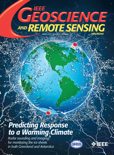
IEEE Geoscience and Remote Sensing Magazine
Scope & Guideline
Connecting Professionals with Groundbreaking Discoveries
Introduction
Aims and Scopes
- Remote Sensing Technologies:
The journal emphasizes the development and application of various remote sensing technologies, including Synthetic Aperture Radar (SAR), optical sensors, and multispectral imaging, to monitor and analyze terrestrial and aquatic environments. - Data Fusion and Analysis Techniques:
A core area of focus is the integration of various datasets and advanced analytical techniques, such as machine learning and artificial intelligence, to enhance the interpretation of remote sensing data and improve accuracy in environmental monitoring. - Environmental Monitoring and Management:
The journal publishes research that aims to utilize remote sensing for effective environmental monitoring, including climate change impacts, natural disasters, and biodiversity conservation, showcasing its relevance to societal needs. - Innovations in Methodology:
Consistent contributions include advancements in methodologies for data processing, image analysis, and the development of benchmark datasets that facilitate research and application in remote sensing. - Interdisciplinary Applications:
The scope includes interdisciplinary applications of remote sensing in fields such as agriculture, urban studies, and disaster management, highlighting the versatility of these technologies.
Trending and Emerging
- Artificial Intelligence and Machine Learning:
There is a significant increase in research exploring the application of AI and machine learning techniques in remote sensing, particularly for image classification, data analysis, and predictive modeling, highlighting the field's move towards automation and enhanced data interpretation. - Multisource Data Integration:
Recent publications emphasize the integration of multisource satellite data and heterogeneous datasets, which is essential for comprehensive environmental monitoring and analysis, indicating a trend towards more holistic approaches in data utilization. - Climate Change and Environmental Impact Studies:
Research focusing on climate change and its impacts through remote sensing technologies has gained momentum, reflecting the urgent need to address environmental issues and support sustainable development goals. - Federated Learning and Decentralized Data Approaches:
Emerging themes include federated learning and decentralized approaches for remote sensing image classification, which are crucial for enhancing data privacy and collaborative research across institutions. - Remote Sensing for Disaster Management:
An increase in studies addressing the use of remote sensing for disaster management and risk assessment is evident, showcasing its vital role in responding to natural disasters and enhancing community resilience.
Declining or Waning
- Traditional Remote Sensing Techniques:
There is a noticeable decrease in publications focused solely on traditional remote sensing techniques without the integration of modern methodologies like AI and machine learning, indicating a shift towards more innovative approaches. - Theoretical Frameworks:
Papers that primarily discuss theoretical frameworks for remote sensing applications, without practical implementations or case studies, have become less common, suggesting a preference for applied research. - Basic Sensor Technology Reviews:
Reviews that cover basic sensor technologies without addressing their advancements or applications in current contexts have seen a reduction, reflecting a trend towards more specialized and application-driven content.
Similar Journals
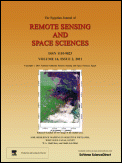
Egyptian Journal of Remote Sensing and Space Sciences
Advancing Knowledge in Remote Sensing and Space SciencesThe Egyptian Journal of Remote Sensing and Space Sciences, published by Elsevier, is a premier open-access journal dedicated to advancing the fields of Remote Sensing and Space Sciences. Since its inception, the journal has gained a prominent reputation, currently holding a prestigious Q1 ranking in Earth and Planetary Sciences and placing within the top 10% of its field according to Scopus metrics. With an ISSN of 1110-9823 and an E-ISSN of 2090-2476, the journal features a diverse range of scholarly articles that explore both theoretical and practical aspects of remote sensing technologies and space science innovations, thus appealing to researchers, professionals, and students alike. Established in 2003 and fully transitioning to an open-access model in 2010, the journal aims to disseminate knowledge and foster collaboration across the globe by providing wider accessibility to groundbreaking research findings. Its commitment to quality and innovation is a catalyst for intellectual development in these dynamic and evolving disciplines.

Journal of Remote Sensing
Advancing Remote Sensing for a Sustainable FutureThe Journal of Remote Sensing is a leading scholarly publication dedicated to advancing knowledge and research in the field of remote sensing. Published by the American Association for the Advancement of Science, this open-access journal, which has been available since 2021, strives to provide an inclusive platform for researchers, professionals, and students alike to share transformative findings and innovative techniques related to Earth and planetary sciences, as well as their applications in social sciences and geography. With impressive Scopus rankings, placing it in the 94th percentile for Earth and planetary sciences and the 93rd percentile in geography, the journal is recognized for its high-impact contributions to the field. Researchers can access invaluable content without barriers, ensuring that the latest advancements in remote sensing technology and methodologies are widely disseminated and utilized. By fostering interdisciplinary collaboration and promoting high-caliber research, the Journal of Remote Sensing is becoming an essential resource for anyone interested in the intersection of technology and environmental studies.
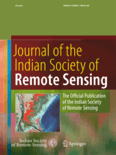
Journal of the Indian Society of Remote Sensing
Championing Excellence in Remote Sensing StudiesJournal of the Indian Society of Remote Sensing, published by SPRINGER, stands as a prominent contribution to the fields of Earth and Planetary Sciences and Geography, Planning and Development. With an ISSN of 0255-660X and an E-ISSN of 0974-3006, this esteemed journal has been in circulation since 1973, showcasing a rich repository of research and advancements in remote sensing applications, methodologies, and technologies, specifically within the Indian context and beyond. The journal's impact is underscored by its placement in the Q2 category of both Earth and Planetary Sciences and Geography as of 2023, ranking impressively in the Scopus database with significant percentiles. With the intent to bridge the gap between theory and practical application, it invites scholars, researchers, and professionals to contribute innovative studies that enhance our understanding of remote sensing and its implications in various domains. The Journal of the Indian Society of Remote Sensing is a vital resource for anyone looking to remain at the forefront of research in this dynamic field.
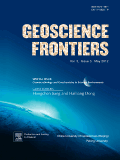
Geoscience Frontiers
Empowering Geoscientific Innovation and CollaborationGeoscience Frontiers is a premier open-access journal that has been at the forefront of disseminating impactful research in the field of Earth and Planetary Sciences since its inception in 2010. Published by China University of Geosciences, Beijing, this journal operates from the Netherlands and has gained recognition for its rigorous peer-review process and high standards of scholarship, earning a distinguished position as Q1 in the Earth and Planetary Sciences category. With a Scopus ranking of 5 out of 195, placing it in the 97th percentile, it reflects the journal's commitment to addressing global geological challenges and advancing our understanding of the Earth’s dynamic systems. As an open-access platform, Geoscience Frontiers ensures that vital research is widely accessible, fostering collaboration and innovation among researchers, professionals, and students alike. By providing a forum for cutting-edge discoveries and theories, the journal plays a critical role in shaping the future of geoscientific research and education.
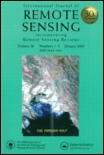
INTERNATIONAL JOURNAL OF REMOTE SENSING
Transforming Data into Insights for a Sustainable FutureInternational Journal of Remote Sensing, published by Taylor & Francis Ltd, stands at the forefront of Earth and Planetary Sciences, providing a critical platform for disseminating pioneering research since its inception in 1980. With an impressive ranking of #25 out of 195 in general Earth and Planetary Sciences and a notable 87th percentile on Scopus, this journal is recognized for its high-quality contributions that span diverse topics including satellite imagery analysis, geospatial technologies, and environmental monitoring. As a Q1 journal in its field for 2023, it offers invaluable insights and methodologies that are essential for researchers, professionals, and students alike. Although not Open Access, the journal facilitates a comprehensive understanding of remote sensing sciences, ensuring that the scholarly community remains updated with the latest advancements, trends, and applications that impact global challenges.
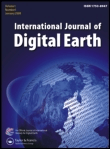
International Journal of Digital Earth
Exploring the intersection of Earth and technology.Welcome to the International Journal of Digital Earth, a premier open-access journal published by Taylor & Francis Ltd, dedicated to advancing the field of digital geoscience. With its ISSN 1753-8947 and E-ISSN 1753-8955, this journal has established itself as a vital resource for scholars and practitioners alike since its inception in 2008. The journal is at the forefront of interdisciplinary research, showcasing a diverse scope from Earth sciences to computer science applications, evidenced by its impressive ranking in the 2023 Scopus database. It holds a Q1 categorization in Earth and Planetary Sciences, with a percentile rank among the top 16% of its peers, and also stands out in the Q2 quartile for both Computer Science Applications and Software disciplines. The journal's commitment to open access, established in 2022, underscores its dedication to disseminating knowledge and fostering collaboration. By providing a platform for high-quality research, the International Journal of Digital Earth plays a critical role in addressing the complexities of our changing planet through innovative digital solutions. Whether you are an experienced researcher or a student, this journal is an essential addition to your academic toolkit.
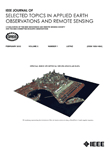
IEEE Journal of Selected Topics in Applied Earth Observations and Remote Sensing
Pioneering Insights in Earth Observation Technologies.IEEE Journal of Selected Topics in Applied Earth Observations and Remote Sensing is a premier peer-reviewed journal published by the IEEE-INST ELECTRICAL ELECTRONICS ENGINEERS INC, focused on advancing the field of Earth observation and remote sensing technologies. With an impressive impact factor, this journal ranks in the top quartile (Q1) for both Atmospheric Science and Computers in Earth Sciences, underscoring its significance and influence in the academic community. Open access since 2020, it facilitates broader dissemination of research findings to enhance global visibility and accessibility for researchers, professionals, and students alike. Spanning the years from 2008 to 2024, the journal covers a myriad of topics that highlight innovative applications of remote sensing data and technologies in addressing environmental challenges. With a Scopus ranking placing it in the 91st and 89th percentiles, respectively, in its categories, the journal serves as a vital resource for advancing scholarly discourse and collaboration in Earth sciences.

NATURAL HAZARDS
Transforming understanding into action for a safer world.NATURAL HAZARDS is a premier academic journal published by SPRINGER that focuses on the multidimensional aspects of natural hazards, their impacts, and mitigation strategies. With a robust impact factor and esteemed rankings in reputable databases such as Scopus, this journal is classified in the Q2 category in Atmospheric Science and Q1 in both Earth and Planetary Sciences (miscellaneous) and Water Science and Technology, showcasing its influence in these critical fields. Established in 1988 and continuing through 2024, it serves as a vital resource for researchers, professionals, and students alike, providing cutting-edge research and insights into the dynamics of natural hazards. Although it does not offer open-access options, the journal is accessible through institutional subscriptions, ensuring that high-quality research is disseminated efficiently to those dedicated to advancing our understanding of environmental challenges. By publishing empirical studies, theoretical analyses, and case studies, NATURAL HAZARDS plays a crucial role in informing disaster management policies and strategies, thereby contributing to a safer, more resilient world.

Journal of Applied Remote Sensing
Exploring the Future of Earth ObservationJournal of Applied Remote Sensing, published by SPIE-SOC PHOTO-OPTICAL INSTRUMENTATION ENGINEERS, stands at the forefront of research in the interdisciplinary field of applied remote sensing, focusing on innovative applications and advancements in technology that support our understanding of the Earth's systems. Established in 2007, this journal has quickly gained recognition, currently holding a Q2 ranking in the Earth and Planetary Sciences category, reflecting its influence and quality within the academic community, with a Scopus ranking of #68 out of 195 in General Earth and Planetary Sciences. The journal provides a robust platform for researchers, professionals, and students to disseminate their findings, ensuring open avenues for knowledge exchange in a field that increasingly impacts environmental monitoring, disaster management, and resource management. With its E-ISSN 1931-3195, the Journal of Applied Remote Sensing remains committed to advancing scholarly communication, fostering innovations that respond to real-world challenges, and enhancing remote sensing applications across diverse sectors. The journal operates from its headquarters in Bellingham, WA, USA, and aims to portray cutting-edge research that enriches the academic literature and informs policy and practice.

Remote Sensing Letters
Elevating Academic Discourse in Earth and Planetary SciencesRemote Sensing Letters, published by Taylor & Francis Ltd, is a distinguished journal that serves a vital role in the fields of Earth and Planetary Sciences as well as Electrical and Electronic Engineering. With an ISSN of 2150-704X and an E-ISSN of 2150-7058, this journal has been disseminating cutting-edge research since its inception in 2010, converging toward a future of innovation and technological advancement scheduled through 2024. The journal is recognized for its impactful scholarship, achieving a Q2 quartile ranking in both its categories as of 2023, highlighting its significance in enhancing academic discourse and applications in remote sensing methodologies. Although it does not operate under an open-access model, it provides access to essential findings that address contemporary challenges in the remote sensing domain. Located in the United Kingdom at 2-4 Park Square, Milton Park, Abingdon, OX14 4RN, Remote Sensing Letters is a crucial resource for researchers, professionals, and students committed to advancing their understanding and application of remote sensing technologies.